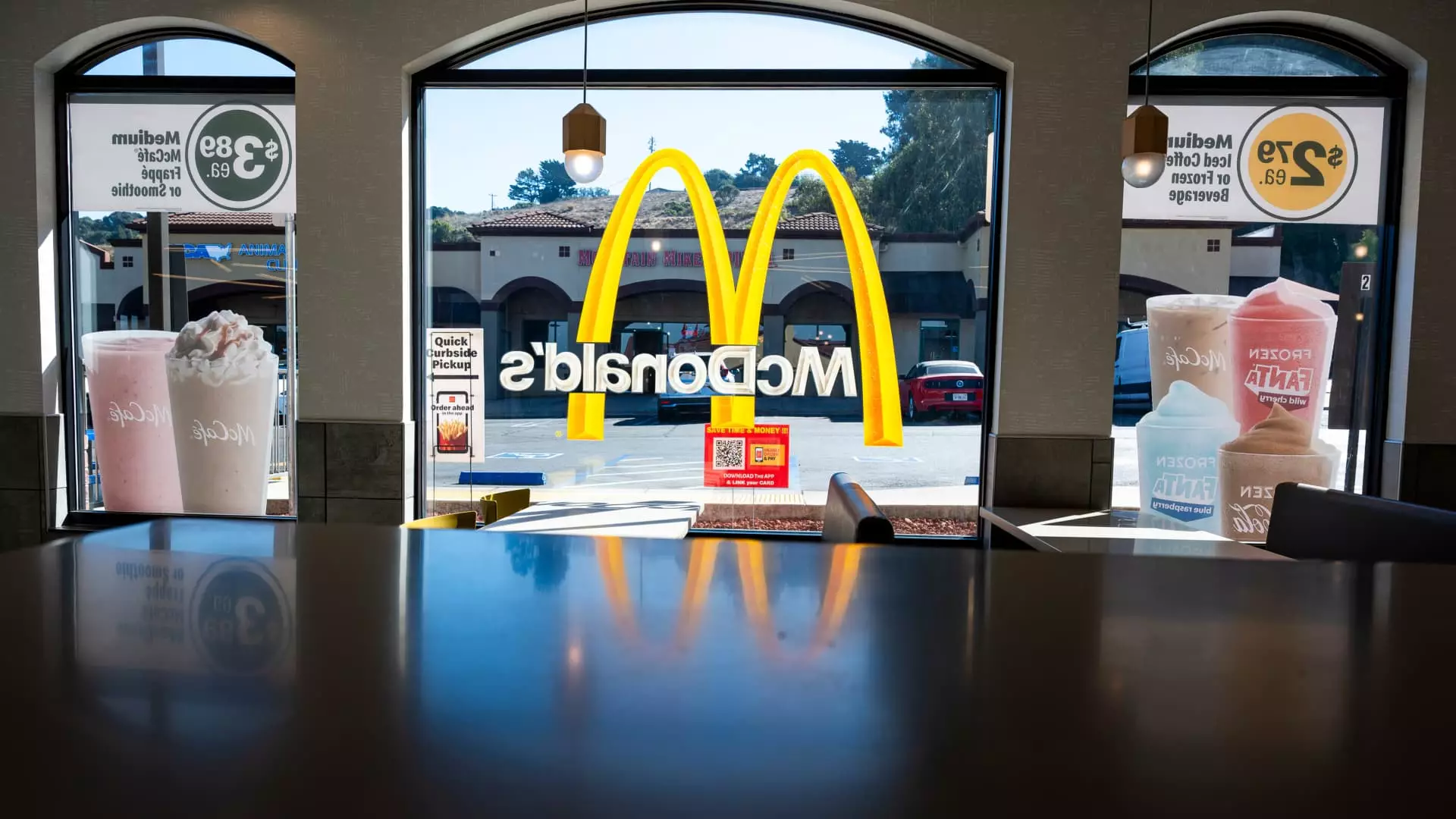As the restaurant industry embarks on the journey through 2025, the phrase “in like a lion, out like a lamb” encapsulates the fluctuating fortunes of the sector. The year began under challenging circumstances, marked by extreme weather conditions and a hesitant consumer base. The impact of freezing temperatures, wildfires, and an overall cautious spending attitude among diners has significantly influenced sales figures across multiple restaurant chains. While establishments like Burger King and Popeyes experienced a resurgence in the latter part of the previous quarter, particularly driven by value-oriented promotions, the momentum appeared to stall as January unfolded. This fluctuation poses the question: can the industry adapt to these ongoing challenges while maintaining profitability?
While some chains reported modest gains, such as a 3.4% increase in net sales in January compared to the previous year, this growth was less robust than the December spikes of 4.9%. Furthermore, prominent players like Wendy’s underscored the broader industry struggles, with CFO Kenneth Cook identifying “traffic headwinds” as early as the first month of the year. The persistence of a cautious consumer mindset suggests that even established favorites are not immune to external pressures. Subway’s U.S. President, Doug Fry, articulated this sentiment, highlighting a critical consumer demand for both quality and value amidst economic uncertainty.
The once-booming breakfast and lunch traffic saw noticeable declines, indicating a shift in consumer dining habits. Many patrons are reevaluating their expenditures, exhibiting reluctance to make dining a financial priority. This scenario presents significant challenges for chains attempting to rely on traditional models of growing footfall through promotions and new menu items.
Despite the headwinds, industry analysts express cautious optimism for sales recovery as 2025 progresses. Comparisons to last year’s slower months are expected to ease, potentially resulting in improved traffic for restaurants. The phrase “ease into the summer months” can signify not just seasonal change, but also a anticipated return to patterns that allow restaurants to thrive. This notion is particularly salient given the dismal traffic numbers from previous years, where negative figures dominated analysis.
Naturally, the restaurant landscape is always susceptible to external factors, and January brought unique challenges, from unusual weather events to the ushering in of a new presidential administration. In particular, Chipotle has cited the wildfires in Los Angeles as having a negative effect on its same-store sales, indicating the profound reach of such occurrences. The company’s forecasts predict stagnation in sales, yet offer a glimmer of hope for the latter half of the year when consumer sentiment might normalize and promotional strategies can take root once again.
The dark cloud of inflation continues to loom large over the food industry. An alarming drop in U.S. consumer sentiment reflects the pervasive fears of rising food prices. As data reveals a 3.4% rise in away-from-home food prices over the past year, consumers’ reluctance to spend seen through the reported traffic declines becomes all the more understandable. The importance of perceived value is paramount; diners are seeking out not only quality but also larger portion sizes that justify their expenses.
Chains like McDonald’s view this environment as a double-edged sword. While aiming for a rebound in sales, McDonald’s anticipates improvement in consumer trust as economic conditions stabilize, particularly among lower-income consumers who are currently tightening their belts. This optimism, however, is tempered by challenges from past incidents such as the E. coli outbreak that adversely affected their brand image and sales trajectory.
As the restaurant industry navigates numerous obstacles this year, it becomes clear that some establishments are positioned for potential resurgence while others face prolonged struggles. Companies like Starbucks, grappling with four consecutive quarters of sales declines, require time and a strategic overhaul to recapture customer interest. The coffee giant’s cautious approach in suspending fiscal forecasts illustrates the uncertainty plaguing the industry.
While forthcoming months hold the promise of better sales as restaurants refine their strategies and focus on consumer trends, the question remains: will this year truly be a transition towards robust, sustainable growth, or will it merely be an exercise in managing challenges with little in the way of substantial recovery? As restaurants look ahead, their fate hinges on their adaptability in an ever-changing economic landscape. In this complex dance of persistence and flexibility, only time will reveal if they can outperform the storm and find the calm beyond the tumult.


Leave a Reply